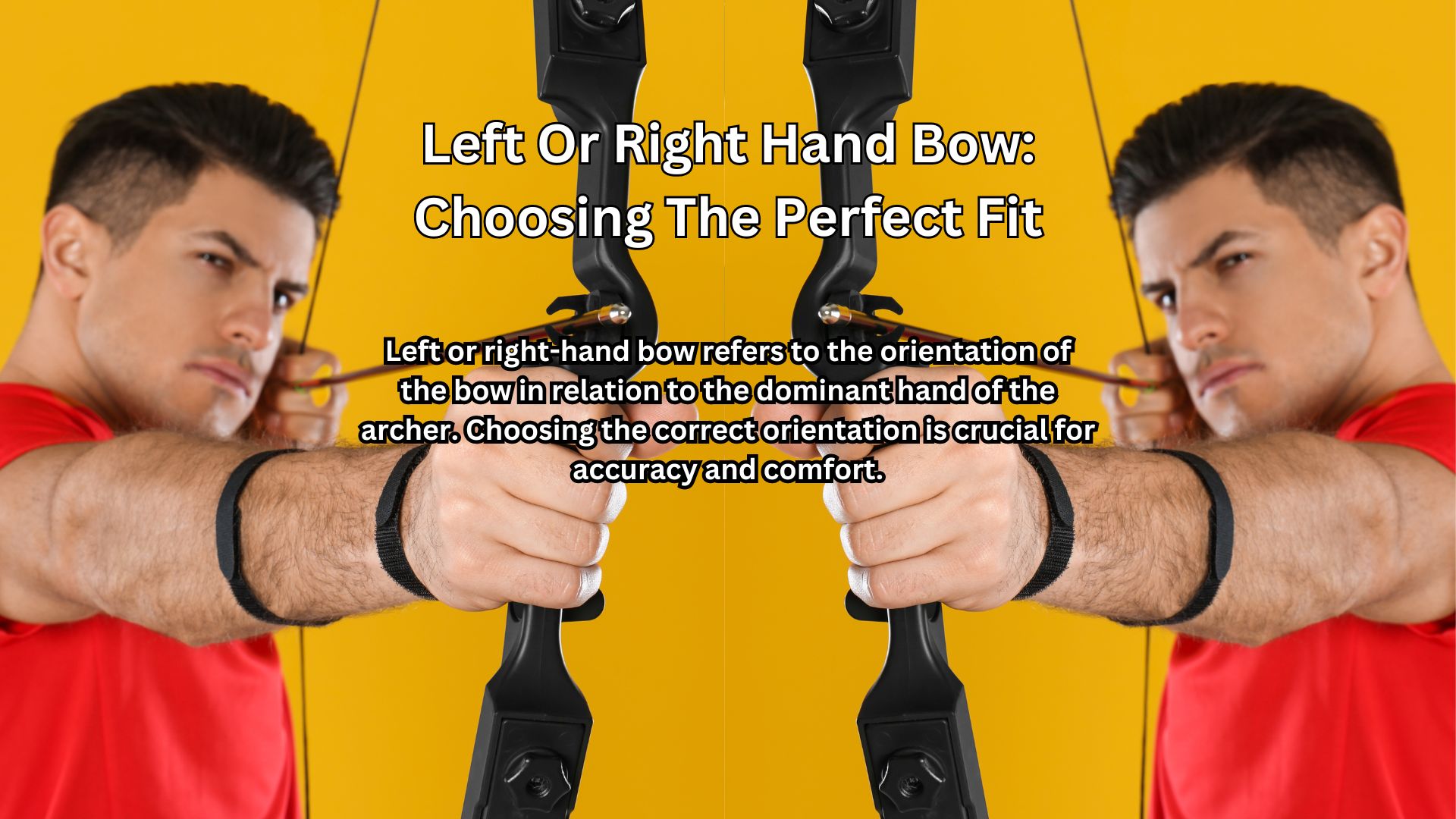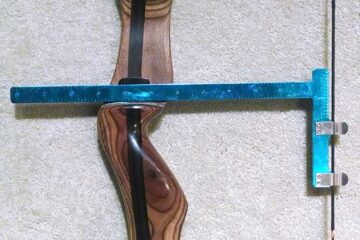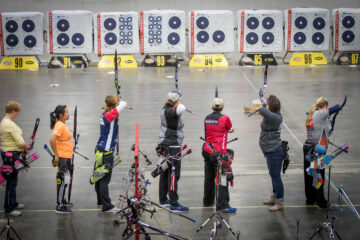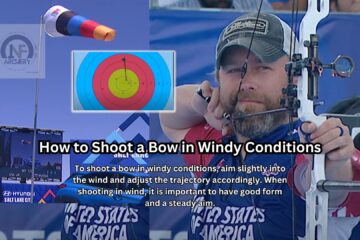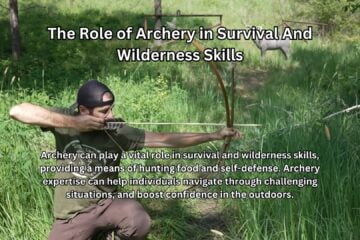Left or right-hand bow refers to the orientation of the bow in relation to the dominant hand of the archer. Choosing the correct orientation is crucial for accuracy and comfort.
Archery is a sport that has been around for centuries and has become increasingly popular in recent years, thanks in part to tv shows and movies that have put archery back on the map. One of the fundamental questions that arise when starting archery is whether to choose a left or right-hand bow.
The answer to this question is based on the dominant hand of the archer. A left-handed archer will use a left-hand bow, and a right-handed archer will use a right-hand bow. This decision is essential as it affects the archer’s accuracy and comfort, making it crucial for athletes to choose the orientation that fits them the most. In this article, we will explore the differences and benefits of each type of bow and help you make an informed decision.
Understanding The Difference
When selecting a bow for archery or hunting, it is important to choose the appropriate hand orientation. The two options available are left-hand and right-hand bows. Understanding the differences between these two types of bows is crucial. Below are some key points to note when it comes to left-hand and right-hand bows:
Explaining The Difference Between A Left-Hand Bow And A Right-Hand Bow
- Left-hand bows are designed for left-handed individuals, who hold the bow with their right hand and draw the bowstring with their left hand, while right-hand bows follow the opposite pattern.
- Left-hand bows are the mirror image of right-hand bows. In other words, if you place two bows side by side, one left-hand and one right, their shape will be identical, but their orientation will differ.
- Both left-hand and right-hand bows come in various types, including recurve bows, compound bows, and longbows. The hand orientation is an essential aspect of their design and affects the bow’s performance.
The Factors To Consider When Choosing A Bow-Hand Orientation
When selecting between a left-hand or a right-hand bow, you should consider the following factors:
- Dominance: The majority of people are right-handed, so they often choose right-hand bows. However, some people are left-handed or ambidextrous, which means they have to select a left-hand bow that is compatible with their dominant hand.
- Preference: Some archers might feel more comfortable with a particular hand orientation, regardless of their dominant hand. In such cases, it is advisable to try both left-hand and right-hand bows to determine which one feels right.
- Coordination: It is essential to consider hand-eye coordination when selecting a bow-hand orientation. For example, a right-handed person who has stronger hand-eye coordination in their left hand might want to consider a left-hand bow to maximize their accuracy.
Selecting between a left-hand or a right-hand bow depends on your hand dominance, preference, and coordination. By taking these factors into account, you can select the bow-hand orientation that is most comfortable and accurate for you.
Choosing The Right Hand Orientation
Tips On Selecting The Right-Hand Orientation Based On The Archer’S Preferences And Needs
When it comes to choosing the right-hand orientation for your bow, several factors need to be considered, such as your level of experience, dominant hand, and eye coordination. Here are some tips on selecting the right-hand orientation based on your preferences and needs:
- Know your dominant hand: Before purchasing a bow, determine which is your dominant hand. If your right hand is dominant, you should get a left-hand bow, and if your left hand is dominant, you should go for a right-hand bow.
- Determine your eye dominance: Your eye dominance is also essential when choosing the right-hand orientation for your bow. If you’re right-eye dominant, a right-hand bow is recommended, and if you’re left-eye dominant, a left-hand bow is preferable.
- Consider your level of experience: Beginners should choose the dominant hand’s orientation, while experienced archers can use either hand, depending on their skills.
- Test different orientations: It’s essential to test various orientations before deciding on the best fit for you. Try shooting with both left and right-hand bows to see which feels more comfortable and natural.
Advantages And Disadvantages Of Using A Left-Hand Or Right-Hand Bow
Each bow orientation has its pros and cons, which we will discuss below:
Advantages Of Using A Left-Hand Bow
- Better eye alignment: Left-hand bows align with the right eye, which is the dominant eye for most people.
- Easier to shoot while moving: Left-hand bows are easier to control while walking or moving since the bow arm is closer to the target.
- More comfortable for left-handed archers: Left-handed archers typically find it more comfortable to use a left-hand bow, which is designed specifically to fit their hand.
Disadvantages Of Using A Left-Hand Bow
- Fewer options available: Left-hand bows are less common than right-hand bows, making them harder to find.
Advantages Of Using A Right-Hand Bow
- More options available: Right-hand bows are more widely available, with more options in design and price range.
- Better resale value: Compared to left-hand bows, right-hand bows have a better resale value since they’re in higher demand.
Disadvantages Of Using A Right-Hand Bow
- Poor eye alignment: Using a right-hand bow may cause issues with eye alignment, causing some archers to struggle with accuracy.
- Harder to control while moving: Right-hand bows can be tricky to control while walking or moving since the bow arm is farther from the target.
Choosing the right-hand orientation for your bow may seem like a daunting task, but it doesn’t have to be. By following the tips provided and considering the advantages and disadvantages of each orientation, you can make an informed decision that best fits your needs and preferences.
Remember to try out different orientations before buying to ensure maximum comfort and accuracy.
Right-Handed Vs. Left-Handed Archery
Highlighting The Major Differences Between Right-Handed And Left-Handed Archery
When it comes to archery, one of the most significant decisions you need to make is choosing which hand will hold the bow. You can either choose left or right hand to hold the bow, and each option comes with its advantages and disadvantages.
Highlighting the major differences between right-handed and left-handed archery can help you make an informed decision based on your level of comfort.
Right-Handed Archery
Choosing the right hand to hold the bow has some advantages, such as the availability of bow-hunting gear. Additionally, right-handed archers can easily find bows that conform to their needs. If you don’t have a preference for either hand, it’s reasonable to choose the right hand as it is more convenient.
When it comes to right-handed archery, the following differences should be noted:
- The bow is held with the left hand while the right hand grips the string.
- Right-handed archers stand with their left side facing the target.
- The right eye is aimed down the bowstring at the target.
- The left side faces the target, making it easier to see and aim the target.
Left-Handed Archery
Left-handed archery has its advantages too. For instance, improved strength and accuracy. A left-handed archer can shoot with more power if their left arm is stronger than their right. Additionally, left-handed archers have a better shot at improved accuracy since this hand rests farthest from the string.
If you opt for left-hand archery, the following are the key differences to take into account:
- The bow is held with the right hand while the left hand grips the string.
- Left-handed archers stand with their right side facing the target.
- The left eye is aimed down the bowstring at the target.
- Shooting a left-hand bow reduces the chances of ‘pinching the arrow.’
Explaining How The Choice Of Bow-Hand Orientation Affects The Stance, Body Alignment, And Shooting Technique
Your bow hand orientation influences your stance, body alignment, and shooting technique. These three areas are vital to your overall performance and how successful you are at hitting your target.
Here’s a look at each of these areas affected by your choice of bow hand orientation:
Stance
- Right-handed archers stand with their left side facing the target.
- Left-handed archers stand with their right side facing the target.
- Your feet should be shoulder-width apart, and your weight should be evenly distributed.
- The foot on your non-dominant side should be slightly closer to the target.
Body Alignment
- A right-handed archer’s head position should be straight with the chin tucked slightly down.
- A left-handed archer’s head position should be straight with the chin slightly up.
- Both hands should be positioned at shoulder height and in a straight line along with your shoulders.
- There should be a subtle rotation of the torso towards the target.
Shooting Technique
- A right-handed archer pulls the bowstring string with their right hand and holds the bow with their left hand.
- A left-handed archer pulls the bowstring with their left hand and holds the bow in their right hand.
- When releasing the arrow, the shooting arm should be extended straight out from the body, without locking the elbow.
- The bow arm should be relaxed to reduce tension.
By taking into account these considerations, you will have a clearer understanding of how your choice of bow hand orientation affects your stance, body alignment and shooting technique. Choose what works for you and practice to improve your skills.
Finding The Perfect Fit
Factors To Consider When Choosing The Perfect Bow-Hand Orientation For An Individual Archer, Including Comfort, Consistency, And Accuracy.
Selecting the perfect hand orientation for a bow may not be easy, but it is a crucial decision that can impact your overall archery experience. Before making a final decision, it is essential to consider several factors that can make or break your shooting ability.
Comfort
The first factor to consider when picking a bow-hand orientation is how comfortable it is for you. It’s crucial to feel at ease when holding and shooting the bow to avoid tension and strain, and ensure consistent shots. Some factors to consider in relation to comfort include:
- Grip pressure: Does the grip fit your hand size? Are you applying too much or too little pressure when holding the bow?
- Wrist position: Does the bow allow you to have a straight wrist, or is it angled awkwardly for you?
- Finger position: Which fingers do you use to pull the bowstring?
Consistency
Another factor to consider when choosing a bow-hand orientation is how consistently you can hold your position. Consistency is key to achieving accuracy with your shots, so it’s important to ask yourself some of the following questions:
- Can i maintain the same grip and hand position, or does it change each time i pick up the bow?
- Is it easy for me to anchor at the same spot every time i draw the bowstring back?
- Can i hold the bow steady for a few seconds after taking aim?
Accuracy
Lastly, accuracy is an essential factor to consider as it’s the ultimate goal of archery. When choosing a bow-hand orientation, consider the following:
- Can i aim consistently with this orientation?
- Am i able to release the bowstring cleanly and accurately?
- Do i feel confident with this orientation, or do i waiver?
Trying Out Different Options Before Making A Final Decision.
The best way to determine the perfect hand orientation for you is to try out various options before settling on one. This allows you to get a feel for the bow and to determine how it handles and whether you feel comfortable, consistent, and accurate.
Here are some tips for trying out different options:
- Visit a local archery store and ask for assistance. They may have different bows available to try out.
- Consider getting a bow that allows you to switch between left and right-hand orientations. This option gives you the flexibility to try out both and see which orientation you prefer.
- Attend archery events and network with other archers. You might be able to try out their bows and get their opinions on what worked best for them.
Overall, finding the perfect bow-hand orientation takes time, patience, and practice. But with careful consideration of the above factors and trial and error, you can find the right orientation for you and take your archery experience to the next level.
Frequently Asked Questions Of Left Or Right Hand Bow
Q: How Do I Determine If I Need A Left Or Right Hand Bow?
A: your dominant hand determines the bow you need. If you are right-handed, you need a right-hand bow, and if you are left-handed, you need a left-hand bow.
Q: How Do I Know Which Is My Dominant Eye?
A: your dominant eye is the one you use to focus on an object naturally. You can try the triangle method, where you use your hands to create a triangle and focus on an object to determine your dominant eye.
Q: Can A Right-Handed Person Use A Left-Hand Bow And Vice Versa?
A: no, a right-handed person cannot use a left-hand bow and vice versa. The bow and arrow’s mechanics are designed specifically for the dominant hand, and using the wrong bow can affect accuracy and comfort.
Q: Is Left-Hand Bow Better For Left-Handed People?
A: yes, left-hand bows are better for left-handed people. Using a left-hand bow has a smoother and more natural draw for left-handed individuals than a right-hand bow would have.
Q: How Important Is Choosing The Right Hand Bow For Archery?
A: choosing the right hand bow is crucial for archery. Using the wrong bow can affect accuracy, comfortability, and a person’s overall experience while shooting. It is essential to select the appropriate bow for your dominant hand and eye.
Q: Can I Switch Between Left And Right-Hand Bows If Needed?
A: if you have not established muscle memory, you can switch between left and right-hand bows. However, switching back and forth can be challenging, affecting accuracy and consistency. It is essential to stick to one type of bow to establish muscle memory.
Conclusion
After weighing the pros and cons of left and right-hand bows, it ultimately comes down to personal preference and comfort. Both options have their benefits and limitations, and it’s essential to choose the one that works best for you. To make the right decision, it’s essential to understand your dominant hand and eye, as well as your hunting style and the terrain you usually hunt in.
Remember to also consider the type of arrows you use and your skill level. No matter which hand orientation you choose, practice and proper technique are crucial for accuracy and overall success. Selecting the right bow can make all the difference in your hunting experience, so take the time to research and try out different options before making a final decision.
Happy hunting!

